Martin Hofmann, chief information office of the Volkswagen Group (pictured, right), explains how the carmaker is transforming its IT system backbone and legacy infrastructure across manufacturing, purchasing, supply chain and engineering – and how Volkswagen is now able to attract top software talent.
Dr. Martin Hofmann has been CIO of the Volkswagen Group since 2011 – but is in many ways working in a completely different role, tempo and culture today than he did at the start of the decade.
His department, which sprawls across all brands and counts 14,000 employees, has seen radical change in just the past two years. Responsibility is more distributed across brands and locations, but with a stronger coordination at a group level to drive standards, share investments and make sure that new technology and systems – whether artificial intelligence, cloud computing or industrial internet of things (IIoT) connectivity – are implemented.
Never has there been a more dramatic transformation of the company’s IT backbone and enterprise system architecture. Hofmann is overseeing upgrades to cloud-based systems in areas like purchasing, finance and human resources with SAP. These are all areas in which Volkswagen has typically customized its systems, but which the company now sees more benefit in standard, off-the-shelf solutions – as long as they adhere to the global standards shared across the group.
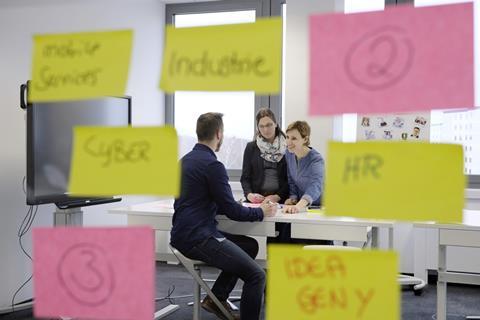
In other areas, such as for production and supply chain, or sales and marketing, Volkswagen Group is working with strategic providers to implement new systems and processes which Hofmann believes will give all brands competitive advantages. It is working with Amazon Web Services and Siemens to build an Industrial Cloud that will connect its 120 global plants and supply chain. With Salesforce, it is transforming not only its customer relationship management (CRM) systems, but also enhancing sales touchpoints to create a more digitally enhanced, customer-focused experience. Overall, the company is adapting its systems and processes to enable more online ordering of vehicles, parts and mobility.
At the same time, Volkswagen is hiring more IT experts and software developers to design more of its own applications and solutions, which Hofmann envisions could eventually make up more than 50% of its business processes, covering many across production and plants.
These are transformations that show Group IT is no longer a department of “order takers” – albeit it still has important service roles – and that Hofmann has a clear directive to find new technology and bring it into the real world. And he expects the result will not just be good for VW’s business; they are changing the company itself.
Mr. Hofmann, the Group IT function has changed quite a bit in recent years, distributing more specializations to regional and brand IT departments. What has prompted this change?
In the past two years we have actually become a much more integrated organization, whereas we previously had a more independent brand structure. Now we are one Group IT department with many locations.
Why? As a headline, it is because the rules of IT have changed. Over the past few years, the world has digitalised at a speed whereby no single organisation can cover the entire spectrum anymore. In IT, we are at the forefront of this transformation. We develop and bring in new technology, shape standards and collaboration. In the past, we were order takers to make sure that business was supported; now, the responsibility and requirements have increased, and so too has our need to be more proactive. The brands don’t have the scale or resources on their own to develop everything, such as cloud platforms.
So rather than simply decentralizing, you have created more scope to bundle resources, but spread it across brand and local expertise?
We have combined local competency and need with a global governance that makes sure we use the capability we have anywhere on the planet, which we didn’t do so well before. In doing so, we enable brand CIOs to take a lead role in the group. This goes especially for the three big areas of IT focus: Production, led by Porsche CIO, Mathias Ulbrich; R&D led by Volkswagen Passenger Cars’ CIO, Abdallah Shanti; and sales led by Audi’s CIO Frank Loydl.
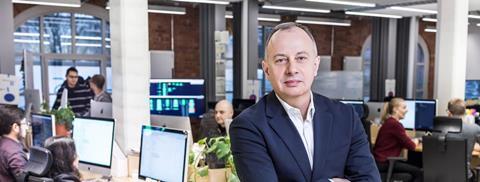
Standardizing across brands or from one location must require hard decisions, especially when a plant or brand has an affinity for a local and specific way of doing things.
That is absolutely correct. We are very strict on defining standards, but all of our brands are involved together with our experts in setting the standards, so there is a very strong buy-in. It is not done behind closed doors, but it is an open-source approach. The brands bring in their expertise and together we agree those standards, which the brands and regions then enforce locally.
Can you give a concrete example of this?
If you look at our Industrial Cloud project, that is the approach that we have taken from day one. All the brands were consulted and considered in designing the framework for what is included and what capabilities we needed.
In return, all the brands and factories got a strict order from production management that said from now on you will not develop any local IT solutions for production, as it will be done jointly on the VW Industrial cloud, which means a solution can be built once and then copied across the plants globally. They [brands and plants] save the investment and gain the speed.
We talk a lot about the exciting innovations in IT that your teams have a big role in implementing. However, the support functions of Group IT are no less than they were before, are they? You still need to maintain the infrastructure, follow up on errors and disruptions.
You’re right. We have moved more into the core business, but we still have a strong support function, whether that is running application and user services or managing legacy systems. This is still the ‘bread and butter’ business and if you neglect it, you are letting down your business partners. It is what we call the ‘coal cellar’ of the IT function and it has to work flawlessly. Let me put it simply: If the service desk is not functioning well, the new strategic, digital and technological advances won’t succeed.
So we cannot cut out staff or replace their tasks to focus on new technology: we have to do both. That is why we are seeing growing numbers of IT staff and we are hiring around the world. We are building software development at high speed, creating AI expertise in Munich and other locations. We are doing it on top of the traditional workload that we have to manage.
“In the past, we were order takers to make sure that business was supported; now, the responsibility and requirements have increased, and so too has our need to be more proactive. The brands don’t have the scale or resources on their own to develop everything, such as cloud platforms.”
Martin Hofmann, CIO, Volkswagen Group
Speaking of the digital labs like Munich, many were launched to promote innovation in areas like data analytics and AI. Several years later, how much progress have you made in applying AI?
Our IT center in Munich, Data:Lab, is our core focus for AI and machine learning (ML) with around 120 people. When we started four years ago, it was really a ‘lab’. Phase one was to experiment, capture the expertise, identify areas where AI could be applied, and be really experimental. In a pharma lab, scientists often throw away 90% of their work, but then they find one active ingredient that they hand over to factories. It’s a similar model for us. In phase one, we were finding areas to learn and apply AI.
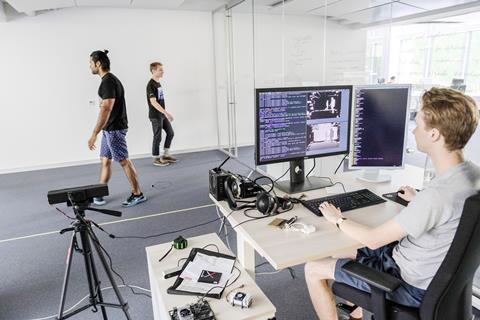
Now we are in phase two, which is the productization of AI. We are building software products or algorithms that we can sell to the business and implement.
In what areas specifically are you using AI?
As an example, we use AI in sales and marketing to predict customer behavior for our products to optimize our product structure.
We are implementing intelligent bots in our core business in finance and HR to automate highly administrative functions, which support our employees in decision making. These bots were all created in a lab and we are transferring them into production mode. That is increasingly the function of our labs: to bring things into life.
Volkswagen has also focused on quantum computing. It’s a technology with a lot of potential, but are there applications you have brought to life here?
We started three years ago and since then we have gained four US patents in quantum computing, including in traffic management and battery management optimization.
That demonstrates that what we are doing in this field can be brought into the real world. This November at Web Summit in Lisbon, we will have a fleet of buses using a quantum algorithm that gives drivers optimized demand routing, predicting where people need transport and where they want to go. It’s a demo but shows a live case.
We are closely collaborating with Google and D-Wave; as they make leaps in technology, we are ready with quantum algorithms for implementation.
For those reasons we are still investing, but honestly it is hard to justify as the real-world application is not immediate. But we maintain a team of ten quantum experts to be ready.
Quantum leaps
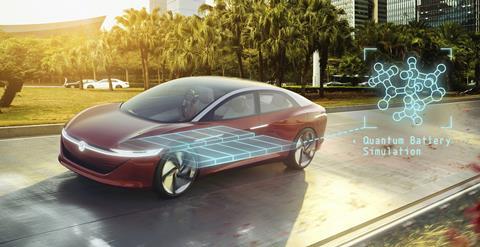
- System and method for predicting and maximizing traffic flow
- System and method for finite elements-based design optimization with quantum annealing – a process to solve extremely complicated mathematical problems
- Method for simulating electronic structure with quantum annealing devices and artificial neural networks
Turning to systems that impact day-to-day operations, Volkswagen is also upgrading its enterprise systems, including its ERP to SAP 4/Hana. What are the most important changes this will this bring?
We have a huge enterprise transformation process on our plate, which will change dramatically most of our business processes. That includes online ordering of vehicles, online delivery, in-vehicle purchases and more – things for which our legacy IT world was not built. We have a backbone landscape with 640,000 people working on it, covering different business areas like finance, HR, and especially logistics, supply chain, factory and sales management. We have to transform that in a very short timeframe.
SAP 4/Hana is a major element, but groupwide it covers mainly our business in purchasing, finance and human resources, which are areas that benefit from highly standardized systems. Other major parts of our IT have to be architected in a different way and there is no longer one dominant technology. Even AI and quantum computing might one day make up only 10-15%.
But for many applications – maybe up to 50% – we will need to develop our own solutions. So we are progressively hiring more Java developers in our software development centers to create cloud-based tech on our own.
Is it a challenge to upgrade and change all these systems at the same time?
The idea is to use out-of-the-box solutions, adapt them to our business accordingly, but don’t customize the heck out of them. HR and finance are not areas over which we compete to gain customers. This is why we focus on standards and implementation, so that we can get quick benefits and results. That is a huge change in our approach and culture.
In supply chain and engineering, on the other hand, that is where we differentiate, and so that is where we want to establish best practices and to really adapt the system to our needs. And so you see a different approach with projects like our Industrial Cloud. The partners we work with matter a lot here, too. Amazon Web Services, for example, brings a lot of logistics expertise which it has developed and that we can use and bring in.
Do you see a declining role for large enterprise systems over time, in favor of microservices, for example?
In general our systems landscape is already an architected approach with microservices and APIs. There will be at least as many other microservices that we buy or even develop on our own. In the past, SAP gave us the architecture as the solution and we integrated to it; now we define the architecture and make SAP part of the solution.
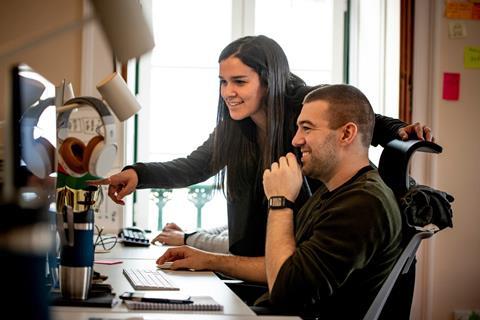
You’ve spoken about the need to hire more IT staff and do more in-house software development. But competition for talent is fierce. Is Volkswagen at a disadvantage in hiring IT expertise compared to startups and tech giants?
We are learning a lot about acquiring and retaining new software talent. For a long time we have been an engineering-focused company. If I wanted to be an automotive engineer, I would move to Wolfsburg – that has worked for us. IT talent today is different and we need to go where the talent is. Often, that means moving away from our corporate headquarters.
We just opened a new software center in Delhi, and that extends from those we have in Pune, San Francisco, Barcelona, Lisbon, Berlin, Munich and elsewhere. Going to the right place is step number one. Secondly, we offer them completely different working environments, where they have the benefit of a large scale, safe and secure, paying company. Working for a startup can be fun, but also frustrating if you’re not able to bring products to market, or even get paid. At VW, we’re creating an environment where you don’t just get a monthly paycheck, but also as much freedom as possible.
It’s a fine line between copying the feel of a startup and really changing the culture. What do you do to get this right?
We know that the labs are not really a startup but we have created a different atmosphere and working tempo. We have set up our development centers and labs in a way strictly using agile methods, DevOps and extreme programming. We have people in the offices that just focus on the atmosphere and culture. We know from our employees that they love to work here. They know they are at VW, but they work in the labs on very exciting and new topics.
It is really is about creating the space to develop a different culture. Thanks to this we have seen Data:Lab in Munich become a brand in and of itself, which AI experts have on their list of prospective employers. In Berlin, Digital:Lab recruits a lot of great people from startups who love to come and work with us because it is a similar environment with a different foundation. We are still learning to adapt to their needs, but the proof that we are heading in the right direction is that the experts are starting to come to us.
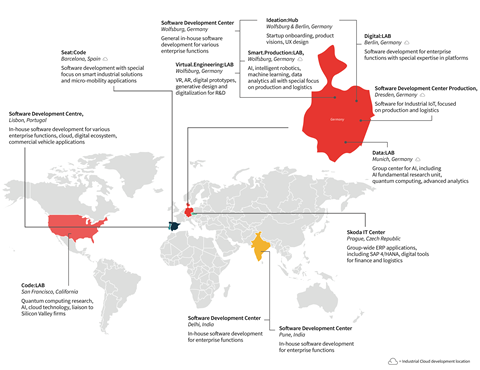
This story originally appeared on our sister publication, automotiveIT International.
A program of change for Volkswagen Group IT
- 1
- 2
- 3
- 4
 Currently reading
Currently readingAt the centre of change for Volkswagen Group


























![Global[1]](https://d3n5uof8vony13.cloudfront.net/Pictures/web/a/d/s/global1_726550.svgz)
















No comments yet